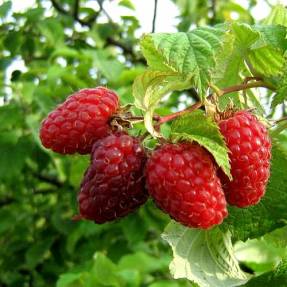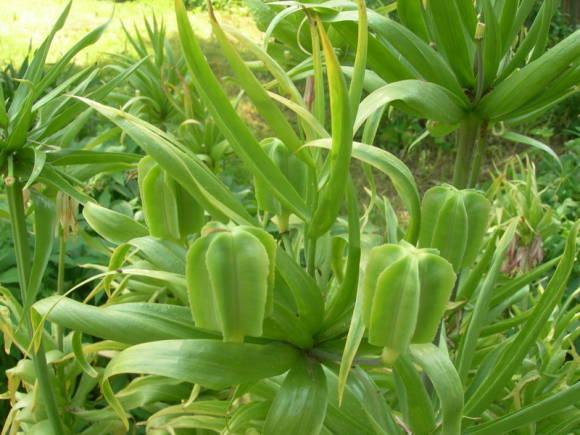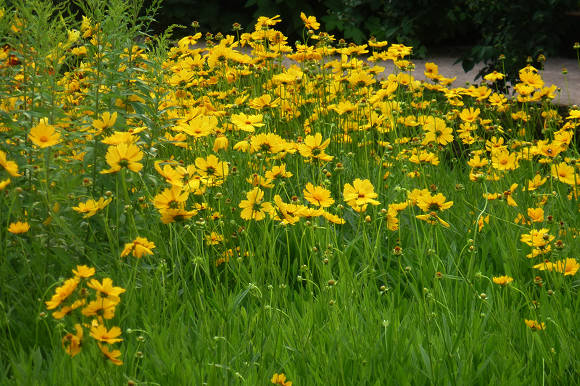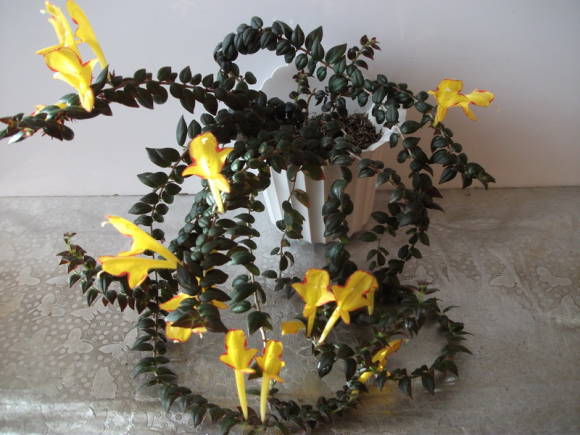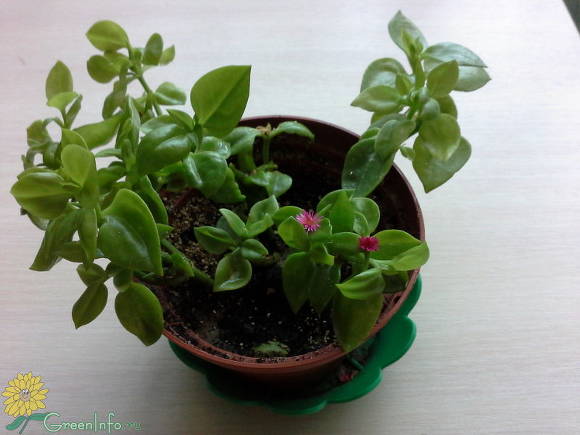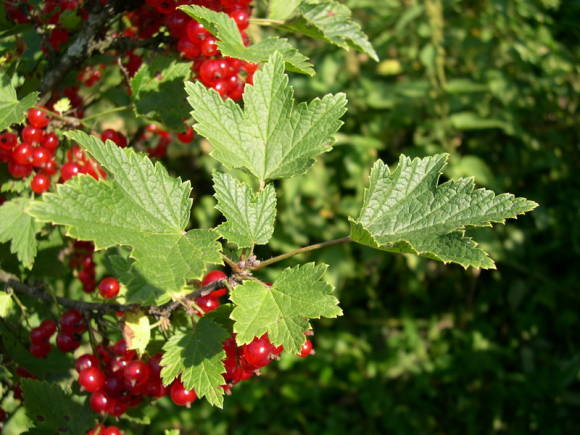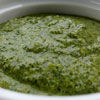Paniculata hydrangea among shrubs blooming from the second half of summer, I would give priority. It is self-sufficient, even if it grows alone on the lawn. It has a comfortable height for viewing (in the Moscow region - about 3 m), which allows you to enjoy the splendor and delicate aroma of inflorescences. It is hard to imagine that in nature, in the south of Sakhalin and the Kuril Islands, in Japan and China, it reaches the size of a 10-meter tree, and its trunks are valued for white and very durable wood and are considered a good ornamental material.

Hydrangea paniculata (Hydrangea paniculata) has red-brown shoots with opposite elliptical pointed leaves 5-15 long, scattered hairy, embossed due to strongly depressed veins. In partial shade, the leaves are dark green, in the sun - lighter. Inflorescences are large, conical, 15-25 cm long, paniculate, of many flowers, in the upper part - bisexual, but mostly sterile, up to 2.5 cm in diameter. The inflorescences are attractive even when they are not loose, covered with round buds the size of a pinhead. During this period, the bush looks delicate, as if covered with beads. When the miracle of transformation finally takes place and the buds bloom, insects swarm over the melliferous flowers. Under the weight of the inflorescences, the stems bend, and the bush becomes rounded.

Flowering continues in our area from mid-July to early September, for more than one and a half months, while the white flowers, as they bloom, first turn pink at the edges, then even more, and finally turn into pink-purple pastels. During this period, it is good to dry them for winter bouquets. Later, the inflorescences dry out and take on a dirty tint, but they still adorn the autumn garden. The foliage turns yellow in autumn, and in some varieties it acquires a purple hue.
In early October, a few cracking capsules with winged seeds ripen. They have a goblet shape. There is a version that this similarity gave half of the Latin name of the genus hydrangea (Hydrangea), from words hydor - water and aggeion - vessel. Water is also mentioned not in vain – hydrangeas are hygrophilous, in nature they choose humid places, often along rivers.
Fruits for gardeners are not of great importance, since varieties are most often cultivated (the original species is found more often in old gardens), and many of them have completely sterile inflorescences, they are the most valuable. Recently, breeders have been working hard on this popular plant, and every year there are always a couple of new premieres. Let's try to compare the varieties.
Varieties of hydrangea paniculata
First, about the old, proven varieties:
- Grandiflora (Grandiflora) - the most common variety with large, up to 30 cm, pyramidal inflorescences of sterile flowers, white, later pink, greenish-red by autumn. One of the leaders not only in inflorescence size, but also in growth rate.

- Brussels Lace (Brussels Lace) - less than 2 m tall, with delicate inflorescences up to 35 cm, in which there are three times more fertile flowers than sterile ones. The flowers are large, white, slightly turning pink by the end of flowering, making the shrub really lacy. Another feature of the variety is the wine-colored shoots.
- Floribunda (Floribunda) - profusely flowering form. Reaches a height of only 2 m. Forms lush panicles of creamy white large flowers on long pedicels, which turn pink by the end of flowering. In culture, this variety is rare.
- Matilda (Mathilda) - up to 2 m tall, inflorescences up to 25 cm, large flowers, change color in the same way as in the Grandiflora variety. Have a scent.
- Pink Diamond In. Interidia (Pink Diamond syn. Interhydia) is a compact variety 1.5-2.5 m tall, inflorescences over 25 cm long consist of both fertile and sterile white, later reddish flowers.
- Tardiva (Tardiva) - late flowering form, up to 3 m tall.Inflorescences are creamy white, purple-pink in autumn, relatively small, up to 20 cm long, conical, loose, mainly of sterile flowers. Fast growing variety.
- Kyushu - up to 3 m, with a fan-shaped crown and straight red-brown shoots bearing large white inflorescences with a delicate aroma. The inflorescence is dominated by fertile flowers, few sterile ones. Red leaf stalks serve as an additional decoration.
- Unique (Unique) - 2-3 m in height. The flowers are white, sterile, pink when flowering, collected in large broad-conical inflorescences up to 25 cm long. One of three aromatic varieties.
 |  |
Varieties of recent years:
- Bobo (Bobo) - dwarf variety up to 70 cm in height. Inflorescences are dense, conical, begin to bloom early, already at the end of June. At first, the flowers are white or with a slight lemon tinge, later they turn slightly pink.
- Darts Little Dot syn. Darlido (Dart's Little Dot syn. Darlido) is a low variety 0.8-1 m with red-brown young shoots. Inflorescences are small, rounded, sterile flowers are not so numerous, white, turn pink as they bloom.
- Dolly (Dolly) - grows slightly more than 1.5 m in height. The stems are strong, bear large cone-shaped inflorescences, in which sterile flowers predominate. White color is replaced by pinkish by autumn.
- Diamond Rouge sin. Rendia (Diamant Rouge syn. Rendia) is a variety that has the most intense color of inflorescences today. Conical caps up to 40 cm long open with large white flowers, then turn pink and acquire bright cherry-red tones in full dissolution.
- Great Star (Great Star) - a variety up to 2 in height, with inflorescences up to 25 cm long, consisting mainly of fertile flowers, against which unusual, large, 7-10 cm in diameter, sterile flowers soar on long pedicels, with bent rounded petals, resembling propellers.
 |  |
- Limeligth - up to 2 m, with strong stems that perfectly hold large wide-pyramidal panicles, densely stuffed with flowers that are greenish, lime in shade, and turn white in the sun. In autumn they take on a pink tint. Excellent quality variety, one of the best.
- Little Lime is a dwarf form of the Limeligth variety with a height of about 1 m, with large inflorescences of greenish flowers that turn pink by autumn. Suitable for garden and container growing.
 |  |
- Magical Fire is a compact variety up to 1.2 m tall. The inflorescences are cone-shaped, relatively small, up to 15 cm long, ivory, later acquire a burgundy hue, and then purple. A bright, beautiful variety.
- Pinky Winky - 2 m high, with large conical inflorescences, consisting of some sterile flowers, at the beginning of flowering white, later coral and purple-pink. A bush with strong stems, keeps its shape well. The leaves turn purple-violet in autumn. A variety with excellent characteristics.
 |  |
- Silver Dollar (Silver Dollar) - a spreading shape, less than 2 m in height and 1.5 times in width. Lush greenish-white inflorescences gradually take on a silvery hue, and in the fall - a pink blush.
- Sunday Fraise (Sundae Fraise) - slightly above 1 m, broad-cone inflorescences, with greenish-white sterile flowers. Gradually from below, the inflorescence turns into a strawberry color, justifying the name of the variety "Strawberry Ice Cream". A very effective and compact variety.
 |  |
- Vanilla Freise syn. Reni (Vanille Fraise ® Renhy) - up to 1.5 m tall, has an asymmetrical crown, brown shoots and the most intense pink color of inflorescences, which remain vanilla-white for a long time at the top. One of the most delightful new products of recent years from the French breeder Eric Renault.
- Fraze Melba syn. Renba (Fraise Melba ® Renba) is a bush up to 2 m tall, with sturdy stems that do not fall apart. The inflorescences are large, their white color very quickly turns into a bright strawberry-red. It is believed that this variety is even better than Vanille Fraise, bred by the same breeder.

- Baby Lace (Baby Lace syn.PIIHPI) is the newest, very compact, profusely flowering variety with a large number of medium-sized white-cream flowers. The bush is upright, only 1 m high and 75 cm wide.

Growing hydrangea paniculata
Hydrangea paniculata for our zone is valuable for its high winter hardiness. However, you need to remember about its Far Eastern origin and, nevertheless, provide it with a protected, slightly partial shade place. In the sun, the inflorescences grow somewhat smaller, and the leaves become lighter.
It is safer to plant in spring, if the plant has an open root system, then transplant the multiplied plants with your own hands. Container planting material can be planted throughout the season, preferably before early September. Young plants need shelter for the first 2-3 years.
At first, hydrangea develops slowly, later in our strip, the growth rate is average, with the exception of some fast-growing varieties, which can grow by 40 cm per year.
Paniculata hydrangea requires loose, fertile loamy soil. Sandy soils are not suitable for her - they are too dry, alkaline, and also clogged with cement construction waste, because alkalization of the soil prevents the assimilation of many elements and leads to chlorosis of the leaves.
Some gardeners believe that panicle hydrangea, by analogy with large-leaved hydrangea, needs acidification of the soil. But this generalization is wrong. This species grows well on soils from acidic to almost neutral (pH 5.5-6.5). The loams of the Moscow region are just suitable for acidity and do not require adjustment.
The plant is hygrophilous, for it is ideally uniform and moderate moisture. Even short-term waterlogging can be tolerated.
The root system of the plant is superficial, widely spread beyond the crown, and, like all Far Eastern plants, it loves coolness. Therefore, annually in the spring, it is necessary to mulch the trunk circle. Mulch will help both retain moisture in the soil and maintain soil fertility, which will have a beneficial effect on flowering.
The plant blooms on the shoots of the current year. This must be taken into account when pruning. Correct pruning provides not only a beautiful habit of the bush, but also promotes the formation of large inflorescences.

Pruning hydrangea paniculata
Pruning hydrangea paniculata can be carried out in late autumn, after leaf fall, but better in spring, before the beginning of the growing season.
Formative pruning is necessary for young plants. If the plant is small and consists of 2-3 short twigs, sparingly cut them in the fall at a height of 20-25 cm to good buds to stimulate tillering. Larger seedlings are shortened by a third, weak and damaged shoots are removed. The goal of formative pruning is to get more strong shoots.
Nursery-acquired container plants are often larger, more mature, and already have several stems. They, like the plants that have already grown in the garden, are subjected to the usual pruning in the spring. It consists in shortening the shoots to a couple of strong buds that are capable of producing good inflorescences on the growths of the current year; at first, a quarter or a third of the length of the shoots has to be cut. Also, too long and thin shoots are cut off, rubbing and growing inward crowns, frozen over, are removed. This pruning should be done annually. With age, you will still have to cut out too old shoots so that they are replaced in time by young shoots.

Here it is worth touching on the issue of pruning faded inflorescences. They often write that dry inflorescences look decorative in winter, in hoarfrost and snow caps, so it is better to cut them off in spring. In my opinion, pruning of inflorescences is still best done in the fall, especially for older varieties with thin stems. In heavy snowfall, freezing rain, branches can break off. The risk of breaking by snow especially increases if the bush was formed into one trunk and resembles a standard tree in appearance. It is necessary to strive for a multi-stemmed habit.Only the caps of the inflorescences are cut off, the main pruning is carried out in the spring, leaving 3-5 strong buds on annual growths.
Stamp forms, which are offered by nurseries, in youth and, especially, in winter, should be tied to the support. They do not need to leave a wide crown, cutting off the shoots to strong buds and rounding the shape.
If you neglect pruning, over the years the bark on the old stems of hydrangea cracks, the crown thickens with irregular weak shoots, the bottom of the bush is bare and the inflorescences are only at the top. And the intensity of flowering itself decreases.
But everything is fixable. Hydrangea paniculata tolerates strong anti-aging pruning, even on a stump, to a height of 10-15 cm from ground level. She is durable, 30 years is not age for her, she is quite capable of living twice as long.
Spring pruning must be combined with top dressing. It is most convenient in early spring, without delay, to apply long-acting granular fertilizer under mulch, then you will not have to worry about summer dressings.
Reproduction of hydrangea paniculata
So, we will not touch on seed reproduction. Mainly cultivated varieties, and they reproduce vegetatively.
The shoots remaining from the pruning are cut into cuttings with 4 pairs of buds, powdered with Kornevin and planted in loose, compost-fertilized soil. Cover with non-woven covering material. Plants that have started to grow are regularly watered. The non-woven fabric is removed in August when hot days are over. For the winter, a school with young plants is covered with spruce branches. The rooting rate of cuttings with proper care reaches 100%.
It is easy to propagate the plant by layering - the shoot is bent to the ground, fixed with a wire pin and sprinkled with soil. Separated after a year.
Landscape use
Hydrangea paniculata looks good both as a tapeworm and planted in groups so as to advantageously present its flowering. White and pink tones of inflorescences stand out brightly against the background of purple-leaved woody forms, gently combined with white-variegated plants.
If the lower part of the bush is bare, you can organize a hydrangea composition by planting species such as oakleaf and serrated hydrangeas in the foreground. These are thermophilic species that need winter shelter.
Hydrangea oakleaf (Нydrangea quercifolia) - up to 2 m tall, blooms earlier than panicle hydrangea, in June-July, inflorescences similar to it, but more rare. In the suburbs, it blooms only in warm summer, very modestly. But it has very decorative oak-like lobed leaves that turn purple in autumn. Their color will create a successful combination with the color of panicle hydrangea inflorescences. This ensemble will remind of natural communities where panicle hydrangea often grows in oak forests.
Serrata hydrangea (Нydrangea serrata) blooms almost simultaneously with paniculate. Her inflorescences are different - corymbose, consisting mainly of bisexual flowers, surrounded by a few large sterile ones. The color of the inflorescences is white or blue.
English landscape designers recommend planting a panicle anemone to the hydrangea. The spring decorative effect will be given by the anemone oak, mountain weevils, hellebores, autumn - the compatriot of our heroine the Japanese anemone or her hybrids, as well as blooming at the same time astilbe.

